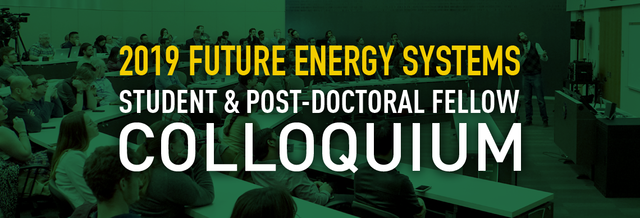
Tuesday, May 7, 2019
8:30 AM - 5:45 PM
Telus Centre, University of Alberta
87 Avenue & 111 Street
Edmonton AB Canada
Featuring presentations, pitches, and posters from Future Energy Systems students and post-doctoral fellows, this event showcased research and provided unique interdisciplinary networking opportunities for all participants.
Watch the sessions:
Energy Systems: Our People, Our Communities
Session 1: Enhancing Current Energy Systems (Click for Abstracts)
Session 2: Addressing Environmental Impacts (Click for Abstracts)
Session 3: Harnessing Renewable Energy - Part 1 (Click for Abstracts)
Session 4: Harnessing Renewable Energy - Part 2 (Click for Abstracts)
Session 5: Energy In Our Communities (Click for Abstracts)